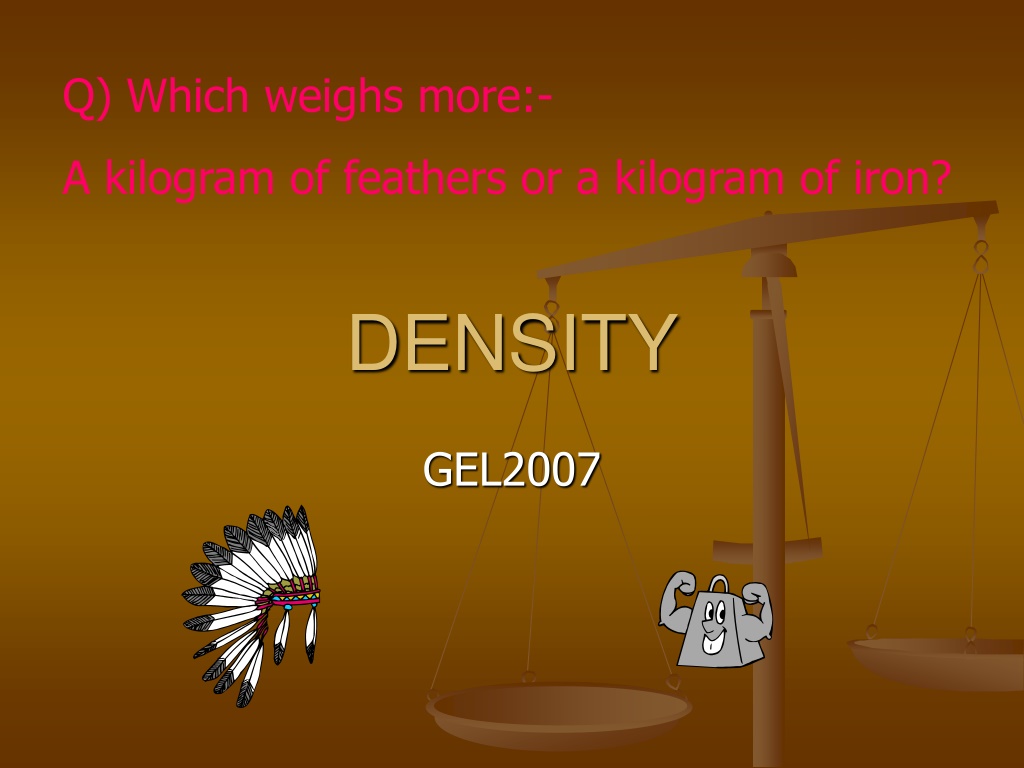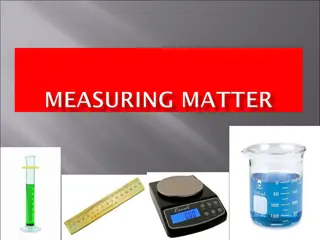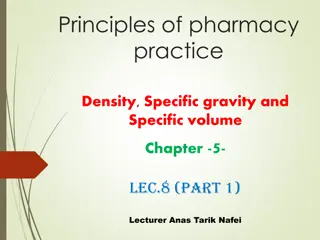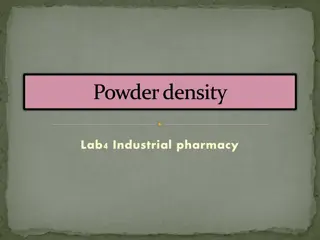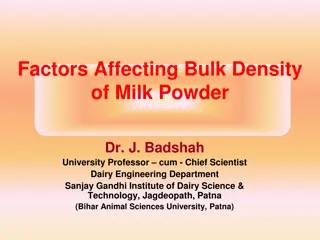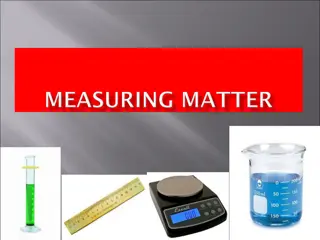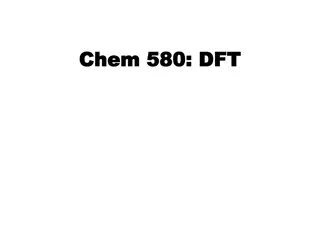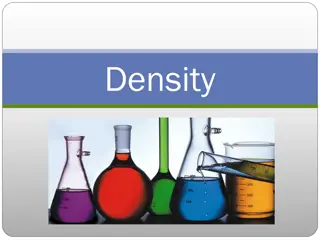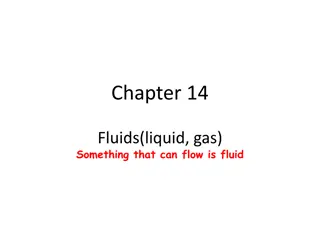Understanding Density and Mass in Science
Density is a fundamental concept in science, defined as mass per unit volume. Different substances have different densities, impacting their weight and buoyancy. By measuring mass and volume, one can calculate density and understand properties of various materials, regular and irregular solids, metals like aluminum, iron, and lead, and substances like wood, water, and glass. Explore how density plays a crucial role in everyday science.
Download Presentation

Please find below an Image/Link to download the presentation.
The content on the website is provided AS IS for your information and personal use only. It may not be sold, licensed, or shared on other websites without obtaining consent from the author. Download presentation by click this link. If you encounter any issues during the download, it is possible that the publisher has removed the file from their server.
E N D
Presentation Transcript
Q) Which weighs more:- A kilogram of feathers or a kilogram of iron? DENSITY GEL2007
What is Density? If you take the same volume of different substances, then they will weigh different amounts. Wood Water Iron 1 cm3 1 cm3 1 cm3 0.50 g 1.00 g 8.00 g IRON Q) Which has the greatest mass and therefore the most dense? Density is the Mass per unit Volume
Density Equation: g or kg Mass Volume Density = m gcm-3 or kgm-3 V cm3 or kg3 = m Example: Q) Liquid water has a density of 1000kgm-3, while ice has density of 920kgm-3. V V= m = 0.25 = 0.000250m3 1000 V = m = 0.25 = 0.000272m3 920 Calculate the volume occupied by 0.25kg of each.
DENSITY OF A REGULAR SOLID Find the Mass of the solid on a balance. Measure the three lengths and calculate the Volume. (ie V = l x w x h ) Calculate the Density. m = 240 g 2.0 cm = m = 240 =10.0 g/cm3 V 24 3.0 cm 4.0 cm
Material Mass in g Length in cm Width in cm Height in cm Volume in cm3 Density in g/cm3
DENSITY Aluminium Iron g/cm3 2.70 7.86 Brass Wood Slate Glass 8.50 0.50 2.80 2.50 Lead Marble Wax 11.3 2.70 0.89
DENSITY OF AN IRREGULAR SOLID m = 360 g = m = 360 =12.0 g/cm3 V 30 Find the Mass of the solid on a balance. Fill the Measuring Cylinder with Water to a known Volume. Add the Object. Work out the Volume of Water that is displaced. Calculate the Density. 80 cm3 50 cm3
DENSITY OF AN IRREGULAR SOLID OR use a Eureka Can to find the Volume. Find the mass of the solid on a balance. Add water until just overflowing. Place a Measuring Cylinder under the spout. Add the Object. Collect the Water and read off the Volume. Calculate Density m = 440 g 40.0 cm3 = m = 440 =11.0 g/cm3 V 40
DENSITY g/cm3 Aluminium 2.70 Iron 7.86 Brass 8.50 Wood 0.50 Slate 2.90 Glass 2.50
Mass of Liquid = Mass of Measuring Cylinder and Liquid Mass of DENSITY OF A LIQUID empty Measuring Cylinder Find the Mass of an empty Measuring Cylinder. Add a certain Volume of Liquid. Find the Mass of the Measuring Cylinder and Liquid Calculate the Mass of Liquid. How? Calculate Density of Liquid. = m = 20 =1.00 g/cm3 V 20 25.0 g 45.0 g 20.0 cm3 45 25 = 20 g
Liquid Mass of empty Measuring Cylinder in g Mass of Measuring Cylinder and Liquid in g Mass of Liquid in g Volume in cm3 Density in g/cm3
DENSITY OF A GAS Remove the air from a flask of a known Volume, using a vacuum pump. Find its Mass. Add the gas to be tested. Reweigh. The difference is the Mass of gas. Calculate Density. To vacuum flask 150.0 g 170.0 g 1000 cm3 170 -150 = 20.0g = m = 20 =0.0200 g/cm3 V 1000
